So, you made it through Gardens of the Moon, and now you’re back for more. While you might be a wee bit disappointed to find so few familiar faces in Deadhouse Gates, I can assure you that the likes of Rake, Brood, Tool, Whiskeyjack, and Quick Ben will be back in Book Three, Memories of Ice, where they’ll mix and mingle with some of the epic personalities you’re about to meet.
First off, note that Deadhouse Gates takes place on a different continent than Gardens of the Moon. GotM saw the struggle of Darujhistan (the last remaining free city on the continent of Genabackis) from the sides of both the Daru and the conquering soldiers of the Malazan Empire (which include everyone’s favourite bunch: the Bridgeburners). Deadhouse Gates draws our attention across the sea, to the continent of Seven Cities—which was strongly hinted at, throughout GotM, as being on the cusp of rebellion.
Whether it’s characters old or new, never fear! Your friendly Malazan tour guide is here once again, this time with a handy rundown of the major players in Deadhouse Gates. Be warned, though: here be spoilers for Gardens of the Moon.
ON THE PATH OF HANDS
D’you remember the Azath House that sprouted in Darujhistan towards the end of Gardens of the Moon? And how there’s a matching one (a.k.a. the Deadhouse) in Malaz City? Well, rumour has it that there’s one on every continent—including Seven Cities—and the theory goes that they’re all connected via magical paths. For someone with a grudge against the Empress—someone who needs to travel unseen to the heart of the Empire—seeking out the legendary Azath House in the Raraku desert seems like a risk worth taking. But the rumours also suggest that the first to reach Tremorlor will gain the power of Ascendancy…and our old friends are far from the only ones seeking it.
Kalam
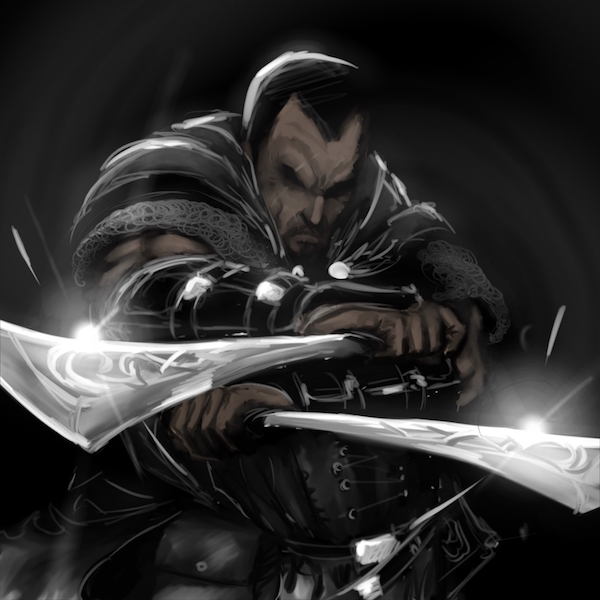
Splitting off from his squad as well as his Bridgeburner BFF Quick Ben, former Claw Kalam Mekhar has one goal in mind: to assassinate the Empress. Well, I say “one goal”; he may or may not get distracted by a book at some point, but we’ve all been there…right, guys?
Fiddler

Accompanying Kalam is fellow Bridgeburner Fiddler, who’s left his own BFF (Hedge) behind on Genabackis. Like Kalam, ol’ Fid’s big beardy face is set towards righting an old wrong. He’s not the only one.
Sorry/Apsalar
Remember Sorry? The sweet lil’ fishergirl possessed by the Patron of Assassins, then slipped into the Bridgeburners as their creepy-arsed new recruit? If so, you’ll probably recall that she’s pretty pissed off with a lot of people right now. You’ll also remember that she changed her name to Apsalar, after her buddy Crokus Younghand’s patron goddess (though I suspect he would’ve ended up worshipping her even if she’d named herself Bollockface).
Crokus Younghand
Ironically, Crokus soon decides to change his profession from thief to—you guessed it!—assassin. You know, just like Sorry, who’s now named Apsalar, a.k.a. the Goddess of Thieves. Come on, Crokus. Aren’t relationships complicated enough already?
Icarium
Half human, half jaghut; with his greenish skin, protruding tusks and tall, muscled, Hulk-like physique, you’d likely shit yourself if you bumped into Icarium in a dark alley. As fantasy fiction is so fond of reminding us, however, appearances can be deceiving; if something glitters, it could be gold or it could just as easily be a turd rolled in glitter, and not all that is green is a Hulk. Yes, in spite of his fierce exterior, Icarium is polite, considerate, and well-educated, a gentle giant with a deep philosophical streak and an earnest desire to explore history’s layers during his never-ending quest to recover his own memories.
Just…don’t make him angry. You wouldn’t like him when he’s angry.
Mappo
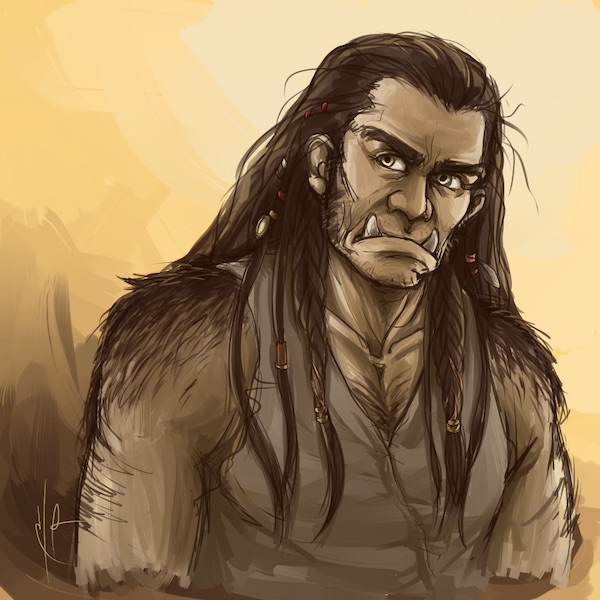
On a centuries-long mission to wrap Icarium in proverbial cotton wool (and—rather tragically—to keep him from recovering the memories he so desperately seeks) is his BFF Mappo. Theirs is a bromance to rival even Rake/Brood, and Mappo in particular is a real cutie. Sure, he’s a bit rough ‘round the edges physical—with his bristled back and his tusks and his overall solid MASSIVENESS, he’s not quite as pretty as his verdant mate Icarium. However, he is arguably even more tragic: caught up in a centuries-long internal conflict between friendship and duty, Mappo is the most philosophical, empathetic henchman you’ll ever meet.
Mappo and Icarium’s quest also sets them upon the Path of Hands, whereupon they (handily) cross paths with Crokus and Co. Less handy is the fact that hundreds of others are following the Path, too . . .
D’ivers
Gardens of the Moon introduced us to the concept of the Soletaken when Anomander Rake veered into his draconian form. Surely nothing could be more terrifying than facing an opponent with the power to transform at will into something truly monstrous. Right?
Meet the D’ivers! If the name doesn’t immediately give it away, let me clue you in: you know how Voldemort turned his snake, Nagini, into a Horcrux (a living repository for a piece of his own soul)? Now imagine if he’d been able to a) split himself into multiple animagus forms, and b) use those forms as living Horcruxes.
He couldn’t, of course. But these guys can.
Gryllen / Messremb / Ryllandaras
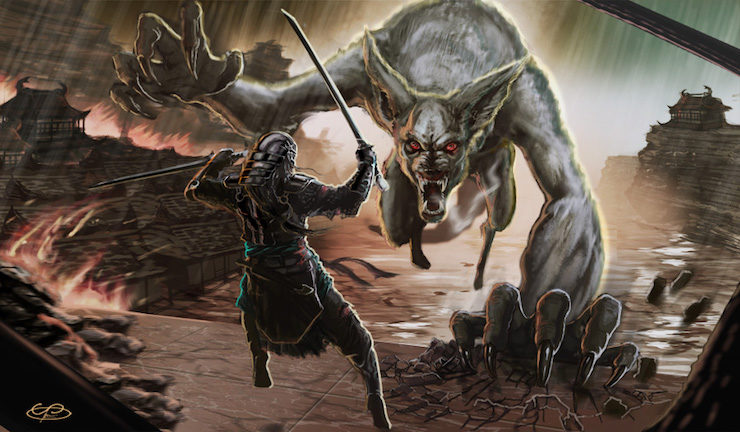
Some bright spark has spread the word about Tremorlor. This same bright spark (or is it shifting shadow?) has also given out directions to the House, essentially sending an open invitation to any Soletaken and D’ivers who happen to be in the area. Of these, there are some—like Ryllandaras the man-jackal and Messremb the bear—whose veered forms are few, but incredibly strong. But as a D’ivers’ power grows, so too does its numbers. When veered into his D’ivers form, big bad Gryllen becomes hundreds of rats that cover the ground like a carpet, overwhelming his enemies by sheer force of numbers and devouring them in mere minutes. As you can imagine, the subsequent clashes on the Path of Hands between Soletaken and D’ivers (and our poor heroes caught in the middle!) are fraught and unpredictable. Who would win in a fight between three bears and five hundred bees? A hundred rats and a thousand ticks? Twelve dogs and a sea monster?
Which is more powerful: an old Shadow priest, or a million spiders?
Mogora
One of our heroes’ more fortuitous encounters (or less fortuitous, depending on your perspective) sees Crokus and company taking a break from the punishing desert in a long-forgotten temple of Shadow. The temple—built into a cliff and inaccessible but for a rope lowered, Rapunzel-style, by its inhabitants—is home to an elderly couple. Mogora and Iskaral Pust show about as much affection for one another as Ian McKellan’s Freddie and Derek Jacobi’s Stuart in the sitcom Vicious, while their bizarre plots and ceaseless bickering are reminiscent of cartoon nemeses Wile E. Coyote and the Roadrunner, Dick Dastardly and that smug bastard pigeon, and—of course—Tom and Jerry. The scenes between Pust and Mogora lend the story an air of slapstick comedy which is, quite frankly, delightful – though our heroes don’t see it that way. Especially when they’re woken in the night by Iskaral Pust standing astride them, brandishing his ever-present sweeping brush in a quest to rid the monastery of its eight-legged denizens (a.k.a. his wife).
Iskaral Pust
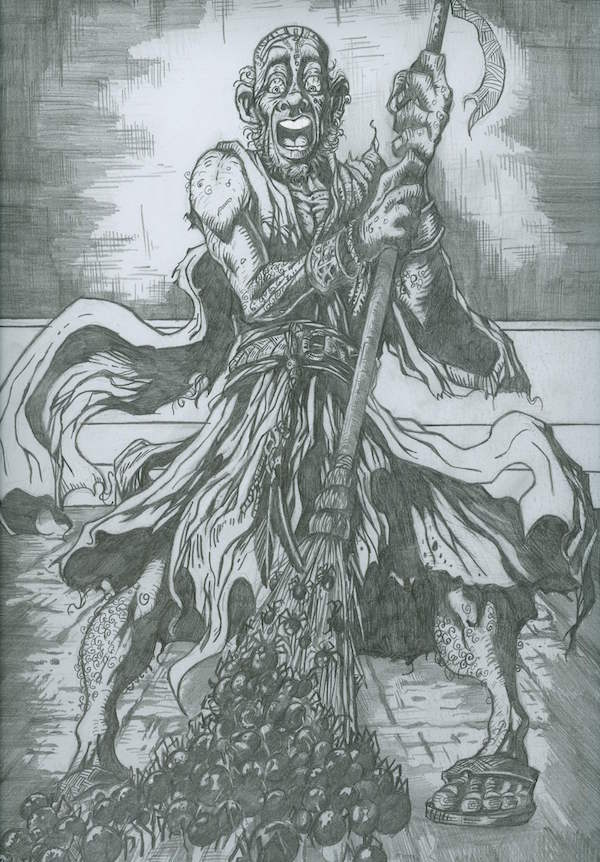
His wife might be a literal nest of spiders, but she’s certainly not the only one spinning webs. He’s no D’ivers, but High Priest of Shadow Iskaral Pust is much craftier than his ostensible role as comic relief leads us to believe. Much like Kruppe in Gardens of the Moon, Pust is all about misdirection, using his constant disingenuous monologues to maintain a façade of madness whilst subtly plucking at everyone’s threads in service to his master, Shadowthrone.
You’re probably thinking that this all sounds very impressive. In which case, the less said about the small, monkey-like bhoka’rala who worship and harangue Pust, the better.
Cotillion
From webs to Ropes: for the Assassin of High House Shadow, Cotillion takes a surprisingly hands-on role in guiding his reluctant protégée, Apsalar, and her companions. Perhaps feeling slightly guilty about abducting her, then possessing her, then forcing her to commit brutal acts of murder in Gardens of the Moon, the Patron of Assassins now appears to have taken on the role of kindly uncle to the knife-artist formerly known as Sorry.
What a nice guy.
Sarcasm aside, Cotillion is a veritable saint compared to this next lot…
THE SOLDIERS OF THE APOCALYPSE
Raraku is a big desert, and plenty of its occupants don’t give a damn about Tremorlor and the Path of Hands. They’re more focused on helping the Whirlwind rebellion bring down the Malazan occupiers and restoring things to how they used to be.
Who or what is the Whirlwind? I’m glad you asked…
Sha’ik
Possession—or more specifically, possession as a not-so-subtle metaphor for the way religious belief can override an individual’s own better judgement—is a prevalent theme in the first few books of The Malazan Book of the Fallen. We’ve just recalled how Cotillion possessed Apsalar back at the beginning of Book One; now, we have Sha’ik, the mortal incarnation of the Whirlwind goddess Dryjhna. Every time the old Sha’ik gets too, well, old, she’s replaced with a younger girl in an endless cycle of decay and rebirth.
Does the fact that Sha’ik is a willing vessel make her any less of a victim than Sorry? You’ll probably never get the chance to ask her, I’m afraid. She’s protected very fiercely indeed by her two loyal bodyguards: Leoman, and Toblakai.
Leoman of the Flails
Desert boy. Hardened fighter. Have a guess what kind of weapon he uses.
Toblakai
Toblakai,
Out on his own,
Made with triangular almonds,
From triangular trees,
And triangular honey,
From triangular bees,
And oh, Mr—Wait, what?
Oh. Dear reader, let it be known that Toblakai does not appreciate confectionary-themed jokes, nor does he tolerate too much talking. Anyone who persists in either of these will be split in two by his stone, erm, sword.
Bidithal
Speaking of the dangers of confectionary, have you met Raraku’s very own Child Catcher? Just in case blokes like Cotillion and Iskaral Pust lulled you into thinking Shadow cultists aren’t *all* bad, along comes this guy. Though to be fair, Bidithal’s perversions are less a Shadow thing and more a dirty, privileged old man thing. His position as an advisor and powerful Shadow mage means Sha’ik lets him not only get away with murder but also with rape, female genital mutilation, and a whole host of other kinds of abuse. I can guarantee that you’ll look forward to seeing this guy get his just desserts from the moment you meet him…
Korbolo Dom
Korbolo Dom was once a Fist in the Malazan Army; now, he’s the leader of the Whirlwind’s warriors (who, you may recall, are violently rebelling against Malazan rule). But as they say—once a turncoat, always a turncoat, and even the supposedly omniscient Sha’ik isn’t sure she can trust him. So whose side is he really on? Why, Korbolo Dom’s, of course.
Kamist Reloe
Also on Korbolo Dom’s (nebulous) side is Kamist Reloe. Formerly a mage in Dom’s army, Reloe felt inferior surrounded by so many powerful Malazan mages (bless his socks), so he decided to spit out his dummy and turn his cloak (I’ll say one thing for Korbolo Dom: say he’s a trendsetter). Sha’ik is much nicer than those thankless Malazan meanies. Sha’ik even lets him play soldier! Unfortunately for the poor sods under his command, Reloe is not exactly a master strategist. For most commanders, using soldiers as “cannon fodder” is an unpleasant necessity. For Kamist Reloe, it’s the entirety of his tactical arsenal, and may as well be the title of his bloody army.
L’oric
Yet another random weirdo in Sha’ik’s motley menagerie, L’oric at least seems to be much more morally palatable than the likes of Bidithal—on the surface, at least—and walks very much in the light while ol’ Bidithal skulks in shadow.
Mebra
Did someone mention skulking in shadows? Because this guy is just awesome at it. Mebra is yet another minion of the Apocalypse, and is about as trustworthy as you’d expect someone with a name that sounds a bit like “cobra” to be.
By the way, the Whirlwind isn’t a metaphor. It’s a literal whirlwind. What better defence for your rebel camp than a border made of sand? And speaking of sand…
ON OTATARAL ISLAND
Let’s head back to “civilisation” for a brief moment. In the Malazan capital, Unta, there’s a new Adjunct in town. After poor Lorn (Hood rest her) kicked the bucket during the Gedderone Fete in Darujhistan, Empress Laseen decided to appoint someone closer to home to do her dirty work—beginning with the so-called “Cull of the Nobility,” in which random bluebloods and political rivals alike are thrown in chains and sent off to Otataral Island.
If you think that sounds like a nice Caribbean-esque holiday destination, think again. You might recall from Gardens of the Moon that Otataral is a rare, rust-like substance prized for its magic-deadening properties, and that Adjunct Lorn (again, Hood rest her) carried a sword forged from the stuff as a much-coveted symbol of office. Well, someone else is carrying it now, and that Otataral doesn’t mine itself, y’know.
Adjunct Tavore
If you’re wondering why the name Tavore Paran sounds familiar, let me remind you that her brother, Ganoes, was the very first character we met in Gardens of the Moon. As you’ll recall, the House Paran is a noble family, and so the immediate problem with Operation Cull is that Ganoes’ and Tavore’s little sister, Felisin, is among those who’re sent to work the mines.
It’s made very clear from the beginning that Felisin is a sacrifice, one that will make Tavore’s appointment to Adjunct more palatable to the lowborn as well as clearly demonstrating to everyone else where her loyalties lie. What a bitch, huh?
Tavore is cold iron. Everyone says so. And if everyone says so, it must be true. Right?
Felisin
Unaccustomed to dealing with anything more strenuous than indigestion, Felisin Paran gets the shock of her life when the Cull tears her from a life of comfort, drags her in shackles through a heckling populace, and dumps her on a boat to finally disembark on Otataral Island. With no idea of how to function, she sticks with what she knows best: behaving like a spoiled child. Felisin (selfishly, some would argue) takes what little comforts she can find, and acts like a complete cow to everyone around her—including her two mismatched shackle-buddies from Unta, Heboric and Baudin. So why do they still stick around?
Heboric Light-Touch
Toad. He looks like a toad. This is the impression Erikson gives us, and it’s the one that’ll stay with you no matter what. Toad Heboric is heavily tattooed, a reminder of his former role as a High Priest of Fener. (Is Fener a toad? No. He’s a boar. The Lord of War, in fact.) A much harsher reminder of Heboric’s former role—or, rather, his reasons for leaving it—are his missing hands, which were cut off and given to Fener after Heboric got caught with them in the coffers. Just what the Boar plans to do with the disembodied pair of appendages is anyone’s guess. Finger buffet, anyone?
Baudin
Speaking of boars, have you met Baudin? Big, bad, brutal—from the moment we first meet him, shackled alongside Felisin, it’s clear that the apparently thuggish Baudin is a stone-cold killer. Why’s he in chains? We don’t know. Why does he remain attached to Felisin and Heboric (not literally; the chains do come off at some point) despite being more than capable of going it alone? We don’t know that, either. Why does he refuse to leave Felisin behind, even though she’s a burden (and a complete pain in the arse)? We don’t know…yet.
Let’s abandon them to their fate for the time being. Now, we’re going to head back to the mainland to meet some more hard-bitten military types!
THE COASTAL GUARD (a.k.a. Baywatch, with beards)
You’ll know by now that the Malazan marines (like Fiddler and Kalam) are the toughest sumbitches this side of Hood’s gate. Notorious for their fatalistic sense of humour and surly rejection of authority, the marines are somewhat legendary in the eyes of new recruits and old foot soldiers alike, though they’re also regarded by some as a thorn in the empire’s side. (Remember the Old Guard I mentioned in the previous guide? Well, they don’t get much older than these next couple of fellas.)
Gesler
Sergeant Gesler and his squad are mooching around at a miserable coastal posting when the Whirlwind Rebellion sweeps into town. Being the miserable old bastard that he is, Gesler has made a career out of being demoted through the army’s ranks, and so nobody misses his obscure little gang when they take the most roundabout route imaginable to join up with the main Army.
Stormy
Big, beardy, and even more miserable than his best mate Gesler, Corporal Stormy isn’t named for his calm and tolerant temperament. Formerly Adjutant Stormy in the days of the old Emperor (see: Old Guard), he’s got that whole “serial demotion” thing down to an even finer art than Ges. That may well have something to do with the fact that he doesn’t take shit from anyone—including his superiors—and that he’s never afraid to share his opinion.
Truth
When they’re not bickering with one another or being demoted, Gesler and Stormy generally occupy themselves with “educating” their squad’s newest recruit, Truth. Truth is innocent, honest, optimistic—basically, all the things Stormy and Gesler are not. But for all Truth’s squadmates’ shortcomings, rest assured that they’d sail through fire and chaos to protect him.
Kulp
Kulp, Kulp, it rhymes with gulp. And pulp. And—oh, wait. That’s Reek’s thing, isn’t it? Oh, rats. Never mind. Basically, Kulp’s a squad mage, caught in the wrong place at the wrong time and now completely out of his depth.
He’s certainly not the only one…
THE CHAIN OF DOGS
Remember Korbolo Dom? He likes to call his soldiers “Dogslayers” (which is kind of hypocritical coming from a traitor, don’t you think?). In this case, the “dogs” are not only the Malazan soldiers but also refugees; children, women, the elderly, the destitute and the nobility, natives and migrants, warriors and witches and the weak. Oh, and actual dogs.
The backbone of the entire novel, the Chain of Dogs tells the tale of the desperate flight of tens of thousands of innocents, and the dogged fight of those who accompany them as both their shepherds and their protectors. From Hissar to Aren, over hundreds of miles of unforgiving desert, here are the main players:
Duiker
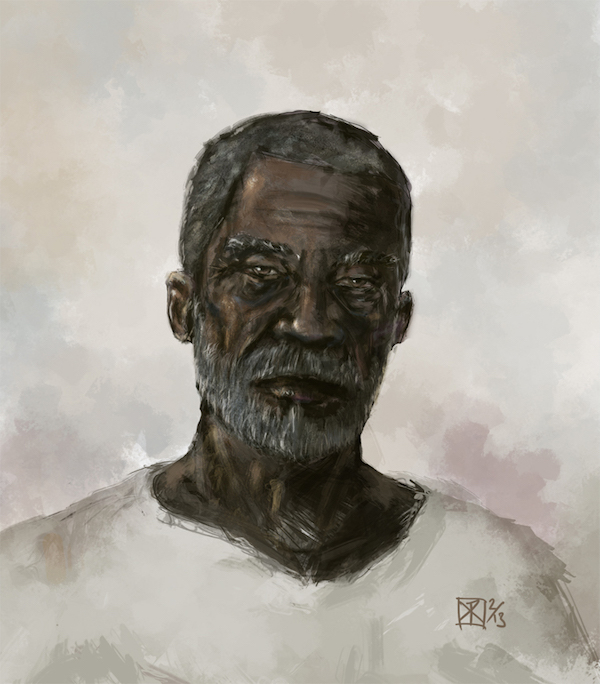
You know how The Black Company works so well because the narrator, Croaker (no relation to Heboric the toad), is a historian whose role as a war chronicler provides a convenient pretext for him to witness all kinds of situations and battles and top-secret meetings? Well, meet Duiker!
Duiker is the Malazan Imperial Historian, which sounds like a position involving a fair amount of prestige. However, Duiker wrote a few naughty things which were considered seditious by those in authority at the time, and now he finds his old creaky arsebones battered day after day on horseback as part of a fleeing army on a sand-blasted continent. Coincidence?
Coltaine
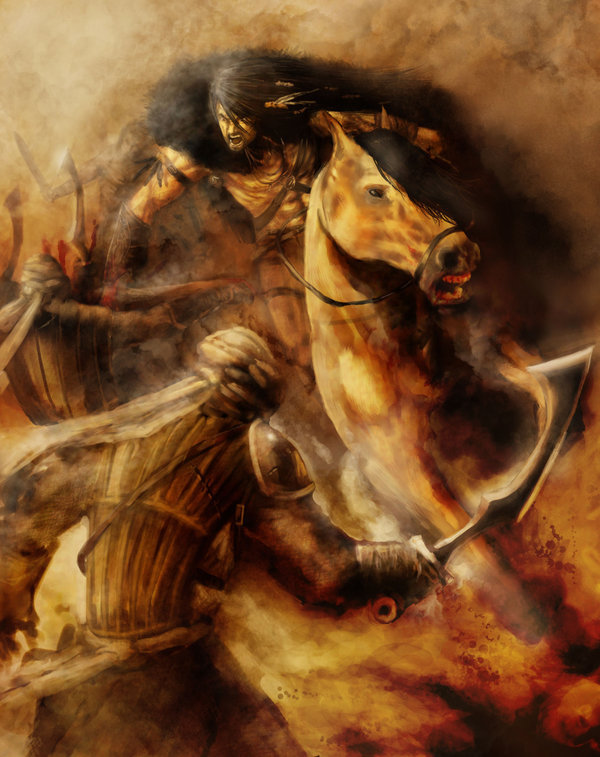
Remember in Game of Thrones when Jon Snow brought the Wildlings back through the Wall? Remember how successful he was in convincing the Night’s Watch to accept them as allies? Now imagine if he’d promoted Mance Rayder, or Tormund Giantsbane, or even WunWun, to lead the Night’s Watch to battle beyond the Wall. What could go wrong?
Fortunately for everyone, Coltaine’s no Jon Snow. As a Wickan—a horse-centric tribe who battled the encroaching Malazans for years before eventually allying with them—he’s not exactly a crowd favourite. Feared and mistrusted as he is by nobility and commoners alike, you’d think his army would crumble within minutes. But Coltaine’s mere presence (which, with his fabulous crow-feather cloak, is striking indeed) puts a halt to most of the initial bickering and backbiting, and his competence (and all-round badassery) in battle and logistics gradually inspires the awe of thousands.
Bult
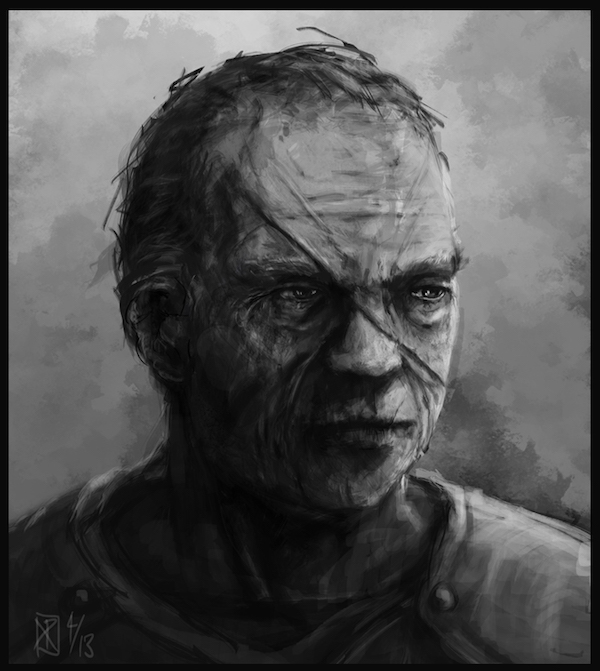
Coltaine has a job to do. He might actually be the only one on the continent who can do it. And good ol’ Bult, with his mangled face and crude-but-loveable manner, is right behind his beloved clan leader every step of the way. He’s part bodyguard, part advisor, part random relative-who-isn’t-actually-related (you know the kind; always there at family gatherings, always telling you how much you look like your mother; you’ve spent your life calling them “auntie” or “uncle” and you’ve never once thought to question why). That’s the other thing about Bult: those who know him well are encouraged to call him “uncle.” For some reason, none of the characters find this even the slightest bit creepy.
Sormo E’nath
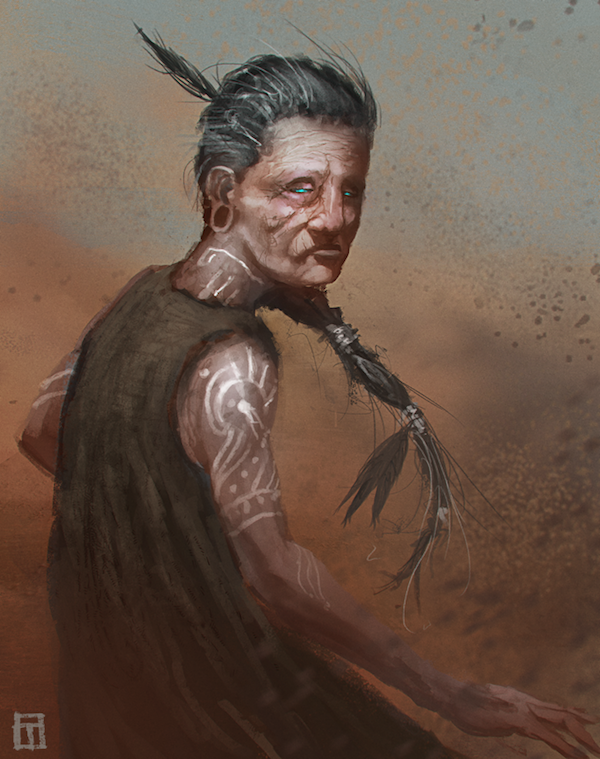
Benjamin Button Sormo E’nath is the most powerful of the Wickan warlocks accompanying the 7th Army. He might look young, but he has an old soul. (Literally. Wickans believe in recycling whatever they can, and this apparently includes the souls of their warlocks.)
Nil and Nether
Twins. Warlocks. Burdened with the memories of the ancient earth spirits with whom they converse. (See also: Little Miss Buzzkill.)
Coltaine and company have just one directive: to escort as many survivors as possible to the continent’s lone occupied city, Aren. Nothing’s ever simple, though, is it?
MALAZAN SUPPORTERS
High Fist Pormqual
Anybody remember that bloated bishop in Robin Hood: Prince of Thieves? The one who gets pushed out the window (spoiler alert for 1991) after loading up with gold and jewels? That’s pretty much Pormqual. Cowardly, greedy, selfish—Pormqual is in no way qualified for the role of Fist, either in the military sense or just the “ruling a city without everything going tits-up” sense. Like all such weak, noble-born rulers with no idea what to do with their power and privilege, Pormqual surrounds himself with individuals who he can trust to help him make wise decisions tell him all the things he wants to hear.
Mallick Rel
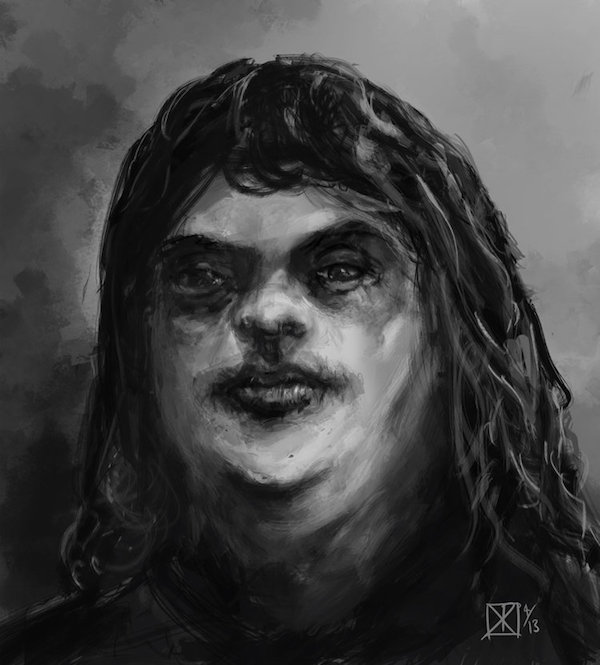
See above, re: bloated bishop. Mallick Rel is a priest of Mael (an Elder Sea God whose cult is now largely defunct), and is slimier than a dhenrabi at a jelly-wrestling contest. It’s not clear what he wants, or who he works for, but it’s pretty obvious he’s some kind of highly qualified nasty bastard. Guys, he even has a smirk.
Commander Blistig
Good bloke. Opposite of Pormqual and Rel, Blistig is just a decent guy trying to survive in a corrupt world, and doing the best he can to stay in charge of the Guard at Aren (a.k.a. the Chain of Dogs’ final destination).
The Red Blades
The Red Blades are a cavalry company, formed of Seven Cities natives who zealously enforce Malazan rule. Hated by their countrymen (who revile them as “Malazan lapdogs”) and mistrusted by their new comrades, it’s no wonder they’re all so bloody angry. But as jingoistic as the Red Blades are, even they despise Pormqual—especially when his fearful paranoia leads him to have them all locked up. Watch out for Tene Baralta and the Setral brothers. No, they’re not a band; they’re just super angry.
Lostara Yil
Slightly less angry than her comrades but no less zealous is Red Blade captain Lostara Yil. Her mission is to sniff out dissenters, kill traitors, and generally do all she can to put a stop to the Whirlwind rebellion. (Also, to be extremely angry.) As a childhood victim of her own native culture’s barbarism, Lostara is a staunch supporter of the Malazan occupation and will do all she can to maintain it. She’s had enough of Dryjhna’s shit, guys.
Pearl
Weathering Lostara’s long-repressed outrage is Pearl, a Claw, who accompanies the Red Blade captain for a short time in pursuit of his former Claw-mate Kalam. Pearl is a canny bastard. He’s also an arrogant one. Infatuated with his own talents even more than he is with Lostara’s, erm, talents, Pearl is the very personification of hubris, and believes himself to be the exception to that old adage about pride and falling. (How does it go, again?)
Hubris, downfall, the tragic hero—these are all themes Erikson is incredibly fond of exploring. The real beauty of The Malazan Book of the Fallen is that we’re able to cheer, or jeer, or weep at each character’s fate no matter how long we’ve known them, whether it comes out of the blue or whether it’s signposted from the very beginning. The beauty of Deadhouse Gates is that it manages to have it both ways, to some degree. You just know that it can’t end well for everyone, but you’re never sure who the victims will be until it happens—and even then, there’s a chance that you’ll spend days living in denial.
Erikson’s characters might not appeal to everyone, and I know plenty of folks who’d argue that they couldn’t relate to a single one. That’s fine. But for those of us who share these characters’ trials and tribulations, what’s most incredible is that Erikson can make us grieve even for the ones he hasn’t killed off. Yet. And as harrowing as the experience has been so far, I know you’ll stick around for Memories of Ice and all the rest. Because us Malazan readers are nothing if not suckers for punishment.
Laura M. Hughes is Fantasy-Faction’s assistant editor. She lives with her husband and three cats beneath the grey, pigeon-filled skies of Rochdale, northern England. When she isn’t absorbed in playing Dragon Age or working on her first novel, you’re most likely to find her trying to convince unsuspecting bystanders to read The Malazan Book of the Fallen. She encourages like-minded folk to seek her out on Twitter @halfstrungharp, maybe have a gander at her horror-fantasy novelette, Danse Macabre, on Amazon—or even to hire her editing services!









